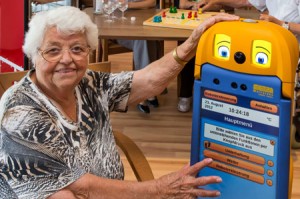
Robohub.org
Frank Tobe on “If you had a EUR 100M investment fund, into which robotics technology or field of robotics would you put your money?”
As the robotics industry continues to grow, enters new industries, and provides new applications, strategic focus is necessary or the overall industry will develop haphazardly and spread out around the world. It is important to remember that the first industrial robot was designed and developed in America but almost all industrial robots today are manufactured offshore and the profits from their sale go to offshore companies.
In the EU and Korea they are stimulating the robotics industry to fulfill national strategic goals such as keeping and growing homeland industry AND solving a particular set of problems, eg, how to help educate Korean children to learn a second language, English, using robots to supplement teachers. Another example of this type of strategic funding is the EU-funded SME project which also had twin goals: keep manufacturers from going offshore and provide robotic assistance to small and medium-sized enterprises, a new marketplace which, with robotic automation, will be able to better compete and remain at home.
The US doesn’t have anything similar but it should because robotics is an industry that has passed us by once and could continue that way again without guidance. $100 million in focused stimulation money could go a long way toward re-establishing a leadership role. The American tradition of entrepreneurial funding and product development just can’t work on a project of the size and scope that I am suggesting. And the alternative, just let nature take it’s course, will likely lead to a similar movement offshore as occurred with industrial robot – where the major manufacturers are located in Europe and Japan.
It seems to me that the next breakthrough marketplaces for robotics will be:
- SMEs (robot workers and co-workers in Small and Medium-sized Enterprises)
- Medical and healthcare (nursing assistance, surgeon augmentation, operating room assistance, therapeutic assistance, home care, elder care, remote presence, hospital automation)
- Agriculture (robotically automated planting, weeding, harvesting, sorting and packaging)
- Aerial surveillance and applications
- Embedded systems within our cars, trucks and taxis
Of these, the one most beneficial to humanity is in the area of healthcare, thus, $100 million focused on stimulating breakthroughs in that industry might be best spent on developing an eldercare robot similar to the one in the movie ‘Robot and Frank.’ Along that path, that robot could then be turned into a consumer services product for basic home care and, down the road, perhaps even child care. Below is a short list of activities such a robot could provide people wishing to live at home independently:
- Cognitive stimulation and assistance
- Therapy assistance
- Monitor health (blood pressure, pulse, temperature, etc.)
- Collaboratively work with smart home environments and a remote control center
- Provide mobility assistance
- Keeps and reminds of daily calendar
- Reminds and delivers medicines, meals and other items
- Stores and locates lost items
- Can communicate when an emergency is detected
- Can communicate when a security breach is detected
- Can enable visual communication with family members and care givers
- Can coordinate other robotic devices such as floor cleaners, lawn mowers, etc.
- Can assist with basic household and yard chores
Imagine someone with legislative connections spearheading an effort to provide a Public-Private Partnership (PPP) to design, develop, product engineer, build, market and distribute a cost-efficient robotic device for home health and elder care AND doing so before the competition beats us to the punch. The PPP would include at least one major medical devices conglomerate, a consumer products company, a few quality-of-life university labs, a couple of healthcare insurance systems, representatives from Medicare and the FDA, and an experienced healthcare/hospital/homecare business management leadership team. And they would all agree to share (patent and otherwise) in the research and development and give back when their efforts become profitable.
Many global government-funded PPP projects are further along the research path — such as Hector, the eldercare robot pictured above — but none have yet been turned into commercially available healthcare devices. $100 million will go a long way toward catching up and, hopefully, leading the pack.
Many consumer product companies are encouraging development of add-on robotic devices to provide consumer benefits, eg, Bosch is attempting to provide hamper to hamper service for dirty clothes (sorting, washing, drying, folding). But they miss the bigger picture in the process.
By solving the problems involved in providing unobtrusive but comprehensive eldercare, the US-funded PPP will also be solving many of these same consumer product issues, thus, the consumer products partner can make transitional products. The reason for the insurance company partners is because they are footing eldercare bills at present and would welcome cost-reducing robotic solutions once they were available. They can afford to be first-adopters and pay the premium price of the initial products.
Therefore, if the project is timely, well-managed, goal-driven and has the right team players, an industry could be born and stay in America and spread to other areas of robotic consumer products as well.
Note: A previous version of this article was published under the title $100 million P-P-P investment in healthcare robotics at my blog Everything Robotic.
tags: finance, Frank Tobe, healthcare robots, medical robots, robot funding, Robotics by Invitation




